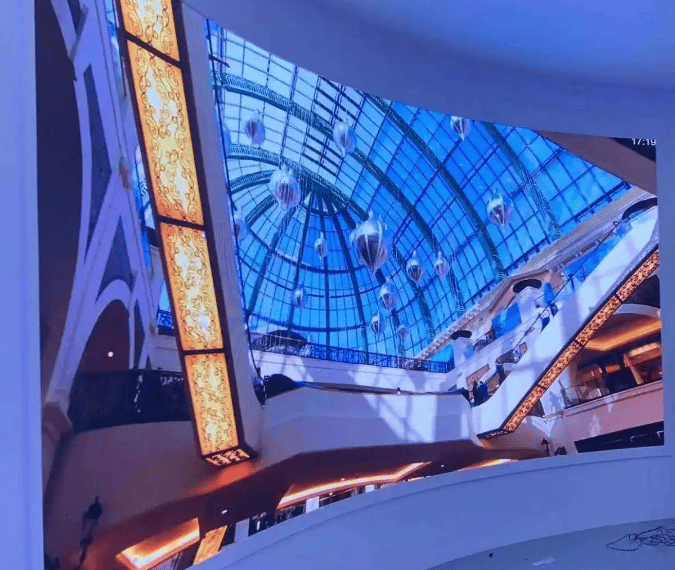LED display development history
The development of LED displays has been filled with technological innovations and breakthroughs, resembling a magnificent history of technological evolution. Its origins can be traced back to the early 20th century. In 1907, Henry, a scientist at the Marconi Laboratory in Britain, first deduced that semiconductor P-N junctions could emit light under certain conditions. Electroluminescence was also first observed in silicon carbide. However, the yellow light emitted by silicon carbide was too dim to be of much practical value at the time, so it was not taken seriously. In 1936, George published a report on the emission of light from zinc sulfide powder, initiating research on electroluminescence and coining the term “electroluminescence.” Significant progress in electroluminescence research didn’t occur until the mid-1950s. In 1955, Reuben Brownstone, a physicist at the American Radio Corporation, first discovered the infrared luminescence effect in gallium arsenide and other semiconductor alloys, achieving diode illumination. Unfortunately, the resulting light was infrared, not visible light. In early experiments, LEDs had to be placed in liquid nitrogen and operated at extremely low temperatures, creating extremely harsh conditions.
1962 marked a pivotal year in the development of LEDs. Companies like Bell Labs, HP, and IBM began developing more practical commercial LEDs. That same year, Nick Holenyak of General Electric invented the first red LED using phosphide on a gallium arsenide substrate. Although this red LED only produced a few thousandths of a lumens at a drive current of 20mA, with a luminous efficiency of approximately 0.1lm/W, it opened the door to the commercialization of visible light-emitting diodes, earning Holenyak the title of “Father of the Light-Emitting Diode.” At the time, LEDs could only be manufactured by hand and were expensive, costing as much as $10 each.
Since then, LED technology has continued to achieve breakthroughs. In 1968, using nitrogen doping, GaAsP devices achieved an efficiency of 1lm/W, capable of emitting red, orange, and yellow light. In 1971, the industry introduced GaP green chip LEDs with similar efficiency. That same year, Hewlett-Packard launched the 5300A 500MHz portable frequency counter, which used a GaAs PLED as a display. With the widespread adoption of digital displays in portable calculators produced by HP and Texas Instruments in the 1970s, LED displays entered a period of prosperity.
In the 1990s, the global information industry experienced rapid growth, and LED displays also experienced rapid development. From 1990 to 1995, blue LED chips were successfully developed, and full-color LED displays entered the market. With the advancement of electronic computers and microelectronics, video control technology emerged in the field of LED display control, enabling 16-level and 64-level grayscale, significantly improving dynamic display quality. During this period, LED display screens developed rapidly in my country. Initially, there were only a few companies with an annual output value of tens of millions of yuan, but the number grew to dozens with an annual output value of hundreds of millions of yuan. Products were used in a wide range of sectors, including finance and securities, sports, airports, railways, stations, road transportation, commercial advertising, postal services, and telecommunications. The development of the securities and stock market in 1993 in particular triggered a significant increase in the LED display screen market.
After 1995, the development of LED displays entered a period of overall steady improvement and industrial restructuring. Competition within the industry intensified, product prices fell significantly, and the application areas expanded. However, a series of new issues emerged in terms of product quality and standardization. Relevant departments have paid close attention to the development of LED displays and implemented appropriate regulations and guidance.
Since the 21st century, LED display screen technology has advanced rapidly. In 2002, surface-mount LEDs (SMD LEDs) gradually gained market acceptance and gained a significant market share. The shift from lead-mounted packages to SMD LEDs aligns with the broader electronics industry development trend, and many manufacturers have launched these products. In 2010, the concept of fine-pitch LEDs emerged. Its emergence further enhanced the display quality of LED displays, resulting in clearer and more detailed images, and has been widely used in high-end indoor display applications. In 2016, the concept of Mini LED was born, and in 2021, Mini LED backlights became commercially available. Manufacturers of equipment, chips, packaging, backlight modules, panels, and end-user brands from upstream, midstream, and downstream sectors have all entered the market. Mini LEDs offer higher brightness, contrast, and color saturation, paving a new path for the development of LED displays. Today, LED displays are widely used in various sectors of society and the economy, from outdoor advertising, sporting events, and stage performances to indoor conferences and surveillance command centers, becoming an indispensable part of our lives.
 LED display screen classification by function
LED display screen classification by function
